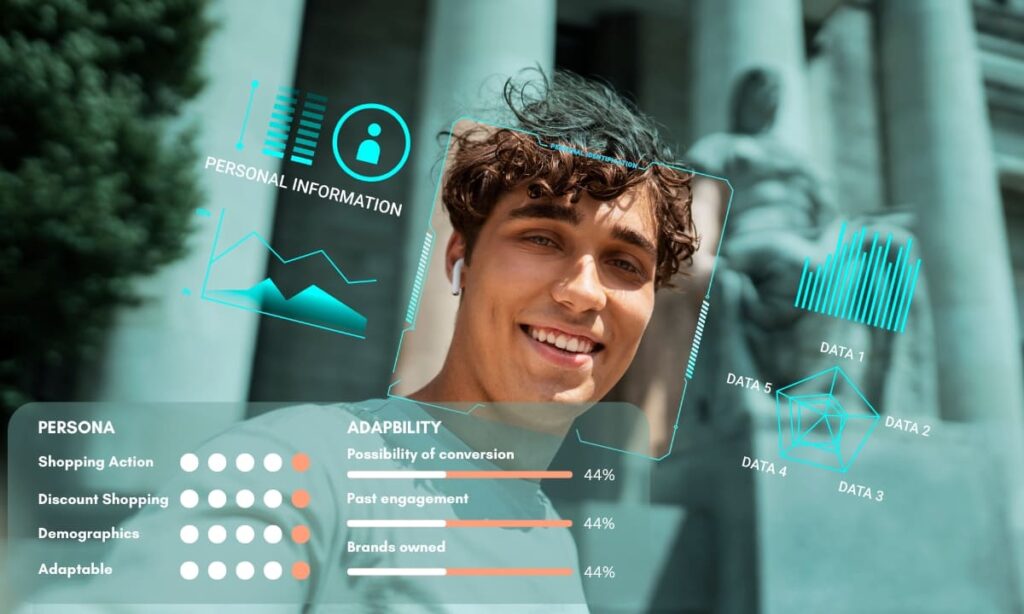With the marketing world full of frantic demands and rapid innovations in marketing, technologies have become a crucial element. Human beings have recognized the potential of artificial intelligence for quite some time now.
Recent AI advancements cover predictive analytics which can forecast with remarkable precision consumer behaviour, trends or any other marketing outcome. The technological evolution is changing the marketing landscape by aligning businesses’ data-driven, evidence-based thoughts.
Understanding AI-Driven Predictive Analytics

AI-driven predictive analytics is based on complex algorithms that examine large volumes of data and come up with meaningful and useful patterns, trends, and correlations. With the help of machine learning, those algorithms adjust the input data as they learn in real-time resulting in refining and improving their prediction abilities over time.
Brands can get ahead of the changing preferences and trends, by knowing about them earlier than many other competitors. AI predictive analytics is now underpinning the cutting-edge approach used in the marketing industry. Let us delve deeper into how businesses are utilizing this technology with real-world examples.
- Consumer Preference Anticipation: AI-based predictive analytics empowers businesses to be prescriptive as it transforms customer preferences into accurate data through historical purchases, browsing habits, social media engagement, and demographics among others. By figuring out the key relationships in the flow of this data, companies may alter their offerings to adapt to the needs of their customers.
- Example: Netflix achieves this through the use of predictive analytics, which shows what the various customers like and thus has a plan to recommend the preferred content based on the forecasts. Through utilising the history of viewing, ratings and choice of interaction with others (recommender system), predicting film/TV shows based on which a user is likely to go next is the possible suggestion that Netflix makes. Under these personalized ways, user experience is more enhanced and users become loyal to that interface.
- Market Trend Forecasting: The predictions of Markets can be predicted using the ability to analyse the data set which includes social media trends, news articles, economic indicators, and the activity of competitors. Through early trend identification, entrepreneurs are capable of seizing opportunities accordingly and updating the strategic directions if required.
- Example: A platform such as Spotify that uses predictive analytics to detect music trends for further curating content and suggesting music algorithms according to listeners’ preferences remains unique. Through studying snap user trends, playlist organization, and user interaction, Spotify predicts the rise of new artists or genres, which enables the platform to provide thematically relevant content for users and keeps them interested in the service.
- Strategic Optimization: AI-enabled predictive analytics solution improves marketing strategy optimization by having a smart analysis of campaign history and knowing the peaks. This data-driven technique is key to businesses because they can then spread their resources well, obtain the best results, and raise ROI.
- Example: Coca-Cola uses predictive analytics for optimization of its marketing campaigns across various channels which in turn helps to increase their sales. Using factors such as consumer behaviour analysis, social media engagements, and sales data, Coca-Cola can pinpoint the right advertising copy, reflection of target market segments, and effective promotional approach for each campaign. The increase of sales effectiveness mainly comes from focusing on what matters which leads to higher marketing ROI and brand growth.
- Dynamic Pricing and Revenue Management: Moreover, predictive analytics also contribute to the coordination of dynamic pricing and revenue management systems. Through analyzing consumer preferences for products, competitor pricing, and market conditions, businesses can perfect their pricing strategy in the present to generate as much revenue as well as profit as possible.
- Example: Amazon uses predictive analytics to dynamically adjust the price of products that mostly depend on such factors as demand, competitor pricing, and historical sales data. Through relentless analysis of market conditions and consumer behaviour, Amazon can choose the best pricing strategy to have the highest sales volume and revenue while beating the competitors.
Making predictions about consumer behaviour with the help of machine learning is both a boon and a bane for businesses by enabling them to acquire valuable insights into customer behaviour, anticipate market trends, enhance marketing strategies and improve the quality of decision-making. Real-time data analysis with machine learning techniques can help businesses wait for the development of the curve and reach to the goal via a competitive business environment.
Forecasting Consumer Behaviour
The most imperative area of AI- AI-inspired predictive analytics in marketing is modelling consumer intentions. AI algorithms, by assessing historical data for example, purchase history, browsing patterns, demographic information, and interactions on social network sites, can identify the minutest signs, which may transmit information about consumer’s future actions.

For illustration only, past consumers’ buying trends and online participation can be run through the forecasting analytics platforms to determine what products will be bought next by a specific consumer group. The awareness of those specific health interests is the information that helps marketers design and customize their messaging, offers and campaigns in a way that would strongly resonate with consumers, thereby increasing engagement and conversion rates.
Leading marketing research and analytics firms are consistently testifying to the great potential hidden in AI applications for forecasting consumer behaviour. Following McKinsey & Company’s report, the companies might improve their marketing ROI by up to 20% with the predictive analytics being used.
These changes indicate the continuous innovation in demand forecasting technologies. The underlying reason is the ability of predictive models to determine the most potential customers, develop personalized marketing efforts, and allocate resources efficiently.
Anticipating Market Trends

Moreover, machine learning predictive analytics along with AI functions well in forecasting changes in market trends rather than consumers’ behaviour. Furthermore, AI takes over the role of workers within diversified industries such as transportation, healthcare, and various production fields.
AI software, by monitoring numerous sources of data including social media flows, news articles, economic statistics, and competitors` activities, may be able to detect emerging patterns and shifts in customer behaviours ahead of time thus preventing the utilization of traditional market research approaches. By doing this, the former creates space for marketers to take advantage of the novel opportunities thus lowering the business risks and improving their competitiveness.
As a result of the survey by Forrester Consulting, the companies are 2.9 times more likely to enjoy substantial income growth if they adopt AI-driven predictive analytics instead of the rest of the companies that base their efforts on traditional analytics methods. Here researchers show the superficial influence of predictive analytics in marketing channels which is driven by timely response to a changing consumer market dynamic so that emerging patterns could be used to make a profit.
With market trend prediction being essential to market leaders for ensuring their viability and profiting from uncovering new opportunities, it is imperative. One of the key areas where AI-based predictive analytics has proved to be virtual in today’s complex digital age is through its ability to apply advanced algorithms that scrutinize various datasets in search of patterns that indicate future market fluctuations.
Here is a detailed exploration of how AI-driven predictive analytics anticipates market trends. Here is a detailed exploration of how AI-driven predictive analytics anticipates market trends:
- Data Variety and Analysis: AI algorithms consume and process various data points such as social media trends, news articles, and economic indices, amongst others, to make sure that the underlying factors contributing to consumer sentiment may be adequately captured for a more accurate market outlook. These data stocks offer a lot of information that is meaningful to industry mood, consumer opinion, and macroeconomic indicators. This data analysis can be done by AI algorithms that can in return predict and detect future trends. These algorithms may be able to forecast the future using the signals and patterns that the computer will be able to find.
- Early Detection of Emerging Trends: The AI-driven model of predictive analytics gives the lead in the trend of anticipating upcoming trends by finding out the minor signs and identical reactions to large data sets. Let’s say, what has been observed as a trend is analysing social media conversations about sentiments which can help unwrap emerging topics or interests among consumers before they become popular among people. In parallel, journalistic news reports and industrial analyses play a significant role in detecting new technologies or market disruption trends as well.
- Proactive Adaptation: The omnipresence of predictive analytics has enriched businesses with insights that they can readily harness to be able to pivot their strategies onsite during the emergence of new market behaviours. As for companies, even if it is starting up with the marketing campaign, changing the marketing message quickly or acquiring new resources severely faster than their competitors, a company has an opportunity to be ahead. In this reactionary stance, businesses could have an edge and induce growth in a marketplace that is characterized by constant changes.
- Risk Mitigation: In addition to identifying opportunities, AI-driven predictive analytics helps businesses mitigate risks associated with market trends. By analysing competitor activities and macroeconomic indicators, businesses can anticipate potential threats and challenges. For example, identifying shifts in consumer preferences or competitive pricing strategies allows businesses to adjust their strategies accordingly and mitigate the impact on their bottom line.
- Quantifying Impact on Revenue Growth: Based on the research of Forrester, AI, predictive analytics is important for revenue growth and significantly impacts. According to the research, businesses that apply predictive analytics have a chance to grow revenue of more than 2.9 times the frequency than respond to traditional methods of analytics. This Find reveals that it is Predictive Analytics that provides the basis for the business’s future and competitive advantage.
Collating several brands, AI-based predictive analytics has contributed to foreseeing market movements and leading them on the path of growth. Say, for example, a multibillion-dollar dioxide such as Walmart using predictive analytics, to see sales data, inventory levels and weather conditions among others to predict consumer demand and optimize inventory management. Through regularly changing stock levels and product mix, Walmart fulfils the consumers’ needs better and achieves a higher turnover of the products.
By way of its AI-driven predictive analytics, a company can now foresee change in the market with much more precision and speed. Through the examination of widespread datasets that reveal newly emerging trends in advance, market players can be prepared to take corresponding measures: to actively advantage of these trends and to counteract threatening risks. The transformative role of predictive analytics in the context of revenue growth emphasizes the necessity of this strategic tool for companies that are guided by volatile markets.
Optimizing Marketing Campaigns

Additionally, AI-based predictive analytics proves to be a vital tool that brings optimization to marketing campaigns. Through analyzing past campaign performance data and recognising the critical factors that contribute to success, predictive models can suggest the best way of campaign management by referring to strategic options, messaging variations and channel allocation choices.
Through this data-driven method marketers are now able to allocate their resources efficiently, campaign efficiency is increased, ROI is maximized and achieving improved returns on investment.
An experiential story about IBM Watson Marketing depicts how intelligent marketing campaigns can be improved with the wisdom of AI. With the in-house capability of applying predictive models to customer data analysis and for customer individual preferences prediction, IBM was able to get an email open new rate over 73% and a click-through rate of uplifted 20%.
These findings demonstrate the real use of predictive analytics in marketing strategy. Predictive models indicate marketers to their customers to deliver relevant and customized experiences to the segment of their market participants.
Challenges and Considerations
The advent of AI-based predictive analytics evinces revolutionary power for marketing strategies. Yet, these aren’t wholly immune to some challenges. Data security issues, the quality of data, and the algorithms’ bias are just some of the responsible jobs of marketers when it is time for the implementation of predictive analytics solutions.
Furthermore, assuring transparency and accountability in all steps of the algorithmic decision-making process is the key to the survival of ethical and consumer trust principles.
The implementation of AI models for predictive analytics is well highly reliant on the quality of data and the domain experts who appreciate the outputs received from these methods. Thus, it is important to equip the company with useful data infrastructures, talented staff, and core competencies as a step towards maximizing predictive analytics in marketing management.
How Brands Can Leverage AI For Their Marketing Strategies

- Data Collection and Integration:
- Acquire several standard datasets, which would be a mix of consumers’ demographics, purchasing history, website interactions, social media engagements, and so on.
- Conjugate these data sets and upload them into a common platform or CRM suite.
- AI-Powered Data Analysis:
- Use AI algorithms to scrutinize datasets comprising many data samples to find any common traits, trends and patterns.
- Utilize Machine learning for processing the data and to acquire effective insights.
- Consumer Segmentation and Personalization:
- Segment your target audience according to the demographic (e.g., age/gender), behaviour (e.g., time spent on the web) and psychographics (e.g., buying motives) features identified with the help of AI analysis.
- Develop a marketing campaign that is personalized to respond to each segment for their individual preferences and needs.
- Predictive Analytics for Forecasting:
- Apply analytics protocols that can predict consumers’ behaviour, market trends and product demand.
- Focus on the evolution of customer behaviour and optimize marketing strategies towards the upcoming patterns of the consumers.
- Content Creation and Optimization:
- Employ AI-enabled solutions to create and boost content suitably for social media, email, and the web.
- Using NLP algorithms and incorporating them to ensure the text can be easily understood will have an impact on the target group.
- Dynamic Pricing and Offer Optimization:
- Use a dynamic pricing model that not only considers but also accounts for product demand, competitor pricing, and other variables.
- Leverage AI algorithms to offer discount promotions for conversion rates and revenue boosters can be very efficient.
- Marketing Automation and Campaign Management:
- Utilize AI in marketing automation tools to simplify campaign management and improve campaign effectiveness.
- Implement automation for tasks like email marketing, ad-targeting, and customer engagement systems to work more efficiently and scalably.
- Customer Service Enhancement:
- By incorporating AI-based bots and VAs into customer service channels, you can instantly render support and advice to your clients.
- Implement NLU technology for the interpretation of customer enquiries and the conveying of personalized answers.
- Performance Measurement and Optimization:
- Monitor and track all marketing campaigns with AI-driven analytics in real-time through analytics dashboards.
- Recognize various areas of development and ensure that strategies are continually improved and refined based on insights gathered from data analytics.
Through such steps along with applying AI technologies to their marketing strategies brands can take benefit of opportunities for innovation, efficiency and effectiveness and the result would be growth and competitiveness in today’s digital age.
Conclusion
AI-powered predictive analytics remains a game-changer in an industry that is bringing about a change in the face of marketing strategy and strategies. Through the manipulation of sophisticated algorithms to cast consumer building, capture market patterns and direct marketing campaigns, firms can enjoy an upper hand in the market and consequently, better business yields.
Yet, realizing the full potential of the predictive analysis is a considerable challenge, in addition to all the different resources and competencies an organization might need. Despite this, predictive analytics as a marketer tool cannot be denied because it has brought a new age in data-driven decision-making and personalized experiences.